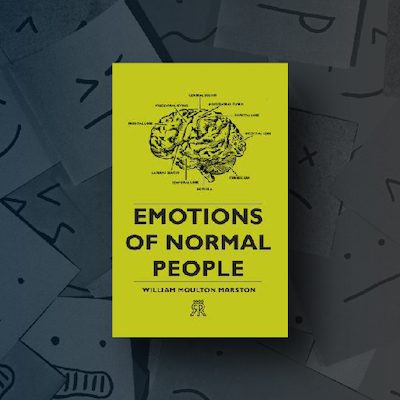What does DISC Mean?
Adam Stamm
Managing Partner: Online DISC Profile

If you’ve been asked to attend a DISC Training workshop or program, you might be curious about what DISC means.
DISC is an acronym, and each letter has a specific meaning:
- Dominance
- Influence
- Steadiness
- Conscientiousness
We all have a personality that is identifiable on the DISC model. Don’t believe me? Check out some of the personalities of well-known celebrities to see what I mean.
You will need to complete a DISC Assessment to find which DISC letters are associated with your personality style. Don’t worry; DISC assessments are well-researched and reviewed by a third-party agency to ensure accuracy and validity.
In this article, I will review the origins of the DISC assessment, its common uses, and how it works. I will also review the research and show why you can believe in the accuracy of your report.
Feel free to use the table of contents below to jump to a section that answers a specific question you might have about DISC’s meaning.
Finally, it’s important to note that regardless of the DISC Style you receive, all DISC Styles have value. There is no bad or good DISC Style. Everyone has strengths and areas that can be improved.
Learn the origins of DISC

William Moulton Marston theorized the DISC model in the book The Emotions of Normal People.
Marston was fascinated by people’s tendency to be more dominant or submissive. His theory focused on the different types of environmental stimulations and whether he could categorize the responses. Marston laid the foundations for classifying various personality styles (his language was slightly different—his terms were Dominance, Inducement, Submissiveness, and Conscientiousness), but not much else from his original work was used.
Marston did not make a DISC assessment. It would take nearly 20 years for another psychologist, Walter Clarke, to find that the DISC model fit well with his research findings.
Clarke was trying to find ways to hire better and select candidates. As an Industrial Psychologist, Clarke had research participants select adjectives from a list they felt described themselves. Over time, Clarke found that groupings of different adjectives continued to be chosen together. As he sought to understand why these adjectives were selected together, he found Marston’s work and used a similar variation of the labels.
Is the small 'i' a different DISC model?
If you are new to using the DISC model, you might have seen variations in how this tool is presented as a product.
DiSC® (with a small ‘i’) is a copyrighted label and owned by John Wiley & Sons. The story of the origins of the small ‘i dates back to the 1970s, when a company called Performax was just getting started.
The story of the “small ‘i'” is that at that time, DISC was only offered as a paper instrument. When Performax ordered its first shipment of profiles, there was a small typo in the title. The ‘i’ in DISC was lowercase. They couldn’t afford to reprint the materials, so they used them to market their assessment and differentiate it from other DISC model tools.
No person or organization owns the DISC model. While there are many differences in the products available, your DISC style should remain consistent across variations of the tool.
How is DISC used?
The DISC model is most commonly used in training and development. However, they can also be used in hiring and selection. Here are a few ways DISC is used:
- Professional Development (Coaching)
- Team Development
- Organizational Development
- Leadership Development
Professional and Leadership Development
One of the most potent aspects of the DISC model is that it can help us see and learn about our behavioral blind spots. The Johari Window offers a great way to see how this idea works.
Someone taking a DISC Basic Assessment might recognize that they are direct, task and goal-driven, prefer to work quickly, and hate wasting time. These are valuable traits for any organization.
However, these traits could cause friction in a team. A person’s DISC assessment would identify this individual as having a D-Personality Type and allow them to have a non-judgemental conversation about when these behaviors cause tension.
One of the most common forms of professional development that DISC uses is leadership development. DISC for Leaders doesn’t tell someone if they will be a good leader. Instead, it focuses on a person’s leadership tendencies through the lens of DISC.
Team and Organizational Development
While we view organizations through the lens of the products or services they offer, at their core, they are only as successful as the teams of people they employ.
Teams that use DISC can begin to understand their team’s personality. For example, if a team has a team leader who has a strongly inclined S-Personality Type, it’s possible the team might be more risk-adverse, along with being more harmonious and stable.
There are pros and cons to all personality styles. The goal is to understand whether we are a product of our style or whether we leverage it when we want to use it.
When an organization commits to using DISC with all of their teams,it establishes a culturee that allows for all personality styles to exist within an awareness of their motivations and stressors. This new culture promotes transparency, empathy, and collaboration.
For any team or organization that is considering using DISC, read our DISC Assessment Starters Guide for How to Use DISC –>
Tips for How You Can Use DISC

If you have taken a DISC assessment already, here are some ways I would encourage you to use the results:
Identify your strengths and weaknesses: Your DISC assessment results can help you identify your natural tendencies and strengths, as well as areas for improvement. Use this information to focus on developing your strengths and addressing your weaknesses.
Understand how you communicate: Your communication style is strongly influenced by your DISC profile. Understanding your style can help you communicate more effectively with others, especially those who have different communication styles. For example, if you are a high D, you may need to be more aware of how you come across to others and adjust your communication style accordingly.
Learn how to work with others: Understanding DISC profiles can help you collaborate more effectively, especially in a team setting. It can help you appreciate and respect others’ strengths and collaborate more effectively. For example, if you are a high C and are working with a high I, you may need to adjust your communication style to be more engaging and interactive.
How do DISC Profiles Work?
There is no black box or magic behind a DISC assessment.
When you take a DISC assessment, you will answer 28 questions about yourself. Within each question are four groupings of words. Each word is associated with one of the four main DISC Styles.
You might receive a secondary DISC Style depending on your score within each of the four main styles.
There are 12 DISC Personality Types, and you can read about them all here –>
The assessment takes between 10 to 20 minutes to complete. Answer the questions candidly about yourself. There are no right or wrong answers.
How accurate are DISC Profiles?
Researchers have found DISC Profiles to be both reliable and valid in their construction as assessments.
However, as data scientists jokingly say, “[crap] in, [crap] out”. Because DISC Assessments are self-assessments, if a person doesn’t read the questions correctly or is distracted while taking the assessment, results may be inaccurate.
You can reach the full DISC Research report here to learn more about the assessment’s accuracy –>
Learn your DISC Personality Style
Are you ready to learn your DISC Personality Type?
Take our Free DISC Assessment to learn your DISC Profile. You will have the option to upgrade your profile to the full report if you want to learn more about your personality style.
